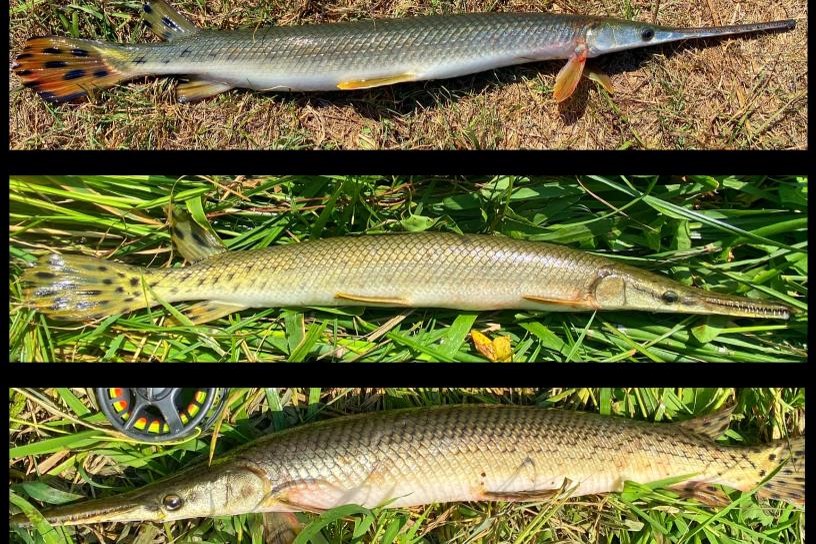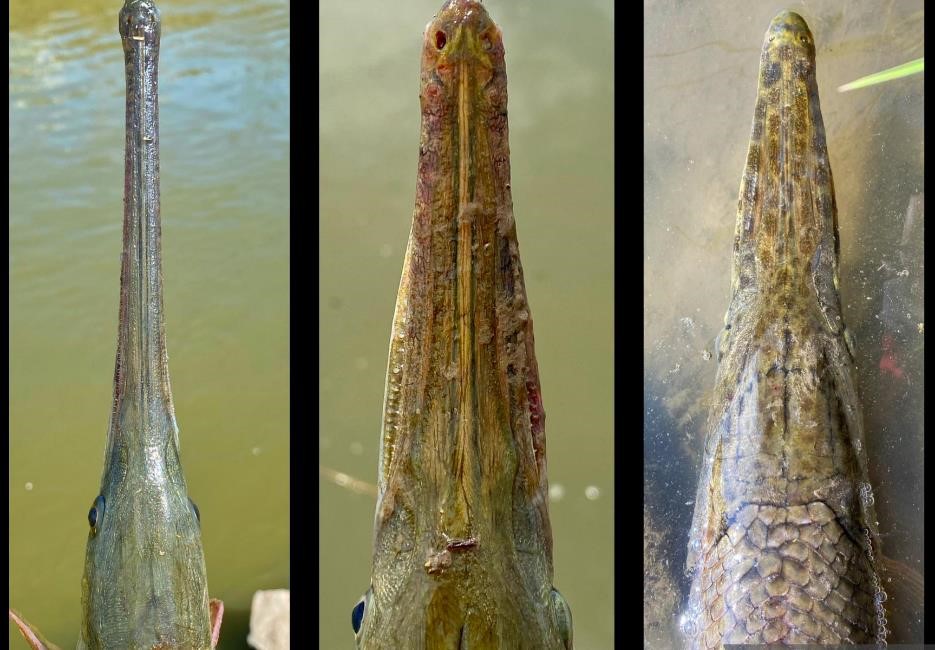
By Daryl Bauer, Fisheries Outreach Program Manager
Want to return to the subject of hybrid fish again for this blog post. This one may surprise you; something a little different: gar.
There are two gar species found in Nebraska. No, alligator gar is NOT one of them. You have to go quite a bit farther south to find alligator gar. Even though they may not be as mammoth as alligator gar, all gar species do have a mouth full of sharp teeth.
By the way, gar get a bad reputation—usually for no good reason. They are considered a rough fish in Nebraska, but they are native. They have extremely tough skin and armor-like scales. In spite of that, with a pair of tin snips, they can be cleaned and are very good on the table (just do not eat their eggs; the eggs are poisonous). Yes, gar are predators, but they are far less efficient than species like largemouth bass and walleye. I believe gar often get their bad reputation because they can survive in low oxygen conditions by gulping air. As a result, gar may survive in waters where other fish perish; subsequently, folks believe the gar ate everything else which ain’t true at all.
But I digress.
Longnose and shortnose gar are found in the Missouri River and other Nebraska rivers that flow into the Missouri. They are most common in the lower reaches of those rivers, but depending on the river and recent water levels they can be found well into central parts of the state. They often find their way into standing waters, for example pits, ponds, and oxbows which periodically flood.
Obviously, the names suggest the difference between the two Nebraska species of gar—longnose and shortnose. The longnose is the larger of the two species reaching weights up to twenty-some pounds in Nebraska while the rod & reel state record for shortnose gar stands at less than ten pounds.
Our two Nebraska species of gar can hybridize. The easiest way to illustrate that is to show a collage or “mash up” of our gar species and their hybrid. In this case, I have photos from an avid Nebraska angler, Scott Buss, that show exactly the differences between longnose and shortnose gar and what their hybrid looks like.

Thanks for the photos, Scott!
That would be a longnose gar on top, a shortnose in the middle and the hybrid on the bottom.
A view from the top of the fish shows the differences best.

Obviously, longnose would be the fish on the left, a shortnose in the middle and the hybrid on the right.
The spotting pattern on the nose of the hybrid has created confusion in the past. In many fish identification keys, a gar with a short nose and spotting keys out as a spotted gar—another gar species found south and east of Nebraska, but not in our state.
In the past, some hybrid gar caught from Nebraska waters have been identified as spotted gar. We have even recognized spotted gar as a bowfishing state record—a fish that was no doubt a hybrid.
Does any of this really make any difference?
No.
But it will give you a greater appreciation for the fish we have swimming in our waters, in this case, native fish. Let me also note that gar can be a lot of fun to catch and a challenge as well. Need some unique tips for gar fishing? Check out this Orvis article, How to Fly Fish for Longnose Gar.
